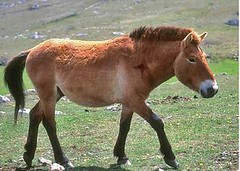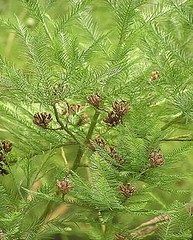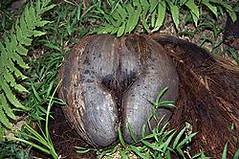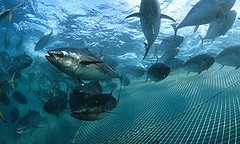兩種箭毒蛙受威脅 台灣寵物市場還在賣
 世界自然保育聯盟(IUCN)10日發表了最新版本的瀕危物種紅皮書(Red List of Threatened Species),並表示雖然保育工作已做出努力,但是全世界仍有四分之一的哺乳動物正處在滅絕風險之下。根據這份清單,一個犀牛類的亞種已經滅絕,而其他的亞種則在滅絕的邊緣搖搖欲墜。
世界自然保育聯盟(IUCN)10日發表了最新版本的瀕危物種紅皮書(Red List of Threatened Species),並表示雖然保育工作已做出努力,但是全世界仍有四分之一的哺乳動物正處在滅絕風險之下。根據這份清單,一個犀牛類的亞種已經滅絕,而其他的亞種則在滅絕的邊緣搖搖欲墜。
植物也正在逐漸消失。西喜馬拉雅紅豆杉(Taxus contorta)是用來生產化療藥物的,由於為了藥用、燃料以及飼料等用途過度開採,而被由易危(VU)重新分類到瀕危(EN)。IUCN表示,下降仍在持續中而且許多地區是無法復原的。
「此次更新提供了全球物種正反兩面的消息,」IUCN全球物種計畫主任珍‧斯麥特(Jane Smart)說,「如果時間允許,我們有足夠的知識進行保育工作,但沒有結合了資源與努力的目標下強力的政治意識,自然的奇觀以及所提供的一切將永遠喪失。」
重新評估了幾個犀牛物種後顯示,西非的西部黑犀牛(Diceros bicornis longipes)已正式宣告滅絕。這種犀牛曾經遍佈非洲大草原中西部,現在已被盜獵者所滅絕。
白犀牛一個位於中非的亞種「北方白犀牛」(Ceratotherium simum cottoni)正在滅絕的邊緣搖搖欲墜,目前被列為野外滅絕(EW)。
IUCN 物種存續委員會主席賽門‧史都華(Simon Stuart)說,「以西方黑犀牛與北方白犀牛來說,如果建議的保育措施有實行,結果會非常不同。現在必須加強這些措施,特別是棲地管理,以提高繁殖率,以免其他的犀牛也一一滅絕。」
爪哇犀牛(Rhinoceros sondaicus)則正為生存背水一戰,其中一個亞種 Rhinoceros sondaicus annasmiticus 的最後一隻個體可能已於2010年在越南死在盜獵者的槍下。
爪哇犀牛尚未滅絕,但是已經縮小成印尼爪哇島上的一個單一族群。犀牛棲地保育工作缺乏政治上信念與支持、國際組織犯罪集團鎖定犀牛為目標,以及對犀牛角的非法需求是犀牛目前面臨的主要威脅。
 普氏野馬(Equus ferus)則是另一個成功的例子,其狀態由極危(CR)調整成瀕危(EN)。牠原本在1996年被列入野外滅絕(EW),但圈養計畫以及成功的野放計畫使其目前族群量估計超過300頭。
普氏野馬(Equus ferus)則是另一個成功的例子,其狀態由極危(CR)調整成瀕危(EN)。牠原本在1996年被列入野外滅絕(EW),但圈養計畫以及成功的野放計畫使其目前族群量估計超過300頭。
2011.2 版的 IUCN瀕危物種紅皮書概況:
總評估物種數:61,914
滅絕(EX) = 801
野外滅絕(EW)= 64
極危(CR) = 3,879
瀕危(EN)= 5,689
易危(VU)= 10,002
近危(NT)= 4,389
低風險/保護依賴= 257 (此一舊分類正逐漸被紅皮書淘汰)
數據缺乏(DD) = 9,709
少受關注(LC)= 27,124
近年來評估了越來越多的爬行動物,包括在非洲東南海岸外島國馬達加斯加所發現的多數爬蟲類。
這份新的紅皮書顯示,馬達加斯加有40%的陸生爬蟲類面臨威脅,其中22種被列入極危(CR)等級,包含變色龍、壁虎、石龍子和蛇,是現在保育的一個挑戰。
 令人鼓舞的是,馬達加斯加新成立的保護區將有助於保育部分極危(CR)的物種,像是泰氏變色龍(Calumma tarzan),怪鼻變色龍(Calumma hafahafa)以及無足石龍子(Paracontias fasika)。
令人鼓舞的是,馬達加斯加新成立的保護區將有助於保育部分極危(CR)的物種,像是泰氏變色龍(Calumma tarzan),怪鼻變色龍(Calumma hafahafa)以及無足石龍子(Paracontias fasika)。
植物存續狀況 關注度有待提升
植物是人類安穩生存的基本要素,也是野生動物棲地重要的組成之一,但目前IUCN紅皮書對植物仍然關注有限。
IUCN表示,當前正在進行的工作,是增加對植物方面的知識,包括檢視所有的針葉樹種之後,發現了「令人不安」的趨勢。
 中國水杉 (Glyptostrobus pensilis) 曾經遍佈中國和越南,其狀態被從瀕危(EN)被移到極危(CR)。族群量下降的主因是擴大極約化農業導致的棲地喪失,而中國似乎也已沒有野生的植株了。先前最大的族群發現於寮國,也被水電廠興建計畫的大水淹沒,而在越南的植株若能產生有用的種子,數量也非常稀少,以致於這個物種正迅速邁向野外滅絕(EW)的地步。
中國水杉 (Glyptostrobus pensilis) 曾經遍佈中國和越南,其狀態被從瀕危(EN)被移到極危(CR)。族群量下降的主因是擴大極約化農業導致的棲地喪失,而中國似乎也已沒有野生的植株了。先前最大的族群發現於寮國,也被水電廠興建計畫的大水淹沒,而在越南的植株若能產生有用的種子,數量也非常稀少,以致於這個物種正迅速邁向野外滅絕(EW)的地步。
英國皇家植物園(邱園)保育、活體採集暨莊園管理主任安懷瑟博士(Tim Entwisle)說,「有380,000種植物被命名與描述,並且每年增加大約2,000種。在邱園,我們估計現在這些植物中有五分之一面臨滅絕的威脅,這甚至還沒有算到氣候變遷造成的影響。從植物的角度來看,我們重新校正了生命量表(Barometer of Life),」他說道,「而對真菌以及藻類來說,我們甚至還不清楚所發生的事情以及所失去的是什麼。」
 研究評估了花崗岩質的塞席爾群島上主要的特有開花植物,在79個特有種中,有77%面臨了滅絕的危機。大部分的物種最近才被評估,除了一個惡名昭彰的物種──海椰子(Lodoicea maldivica),從易危(VU)名單被移至瀕危(EN)。海椰子以其可能的壯陽功效而聞名,面臨著火災與非法採集果核的威脅。其種子目前所有的採集與販受都受到高度的管控,但據信存有黑市對其果核進行交易。
研究評估了花崗岩質的塞席爾群島上主要的特有開花植物,在79個特有種中,有77%面臨了滅絕的危機。大部分的物種最近才被評估,除了一個惡名昭彰的物種──海椰子(Lodoicea maldivica),從易危(VU)名單被移至瀕危(EN)。海椰子以其可能的壯陽功效而聞名,面臨著火災與非法採集果核的威脅。其種子目前所有的採集與販受都受到高度的管控,但據信存有黑市對其果核進行交易。
IUCN紅皮書內容是與科學發現同步的。例如說,直到前一陣子人們都認為只有一種鬼蝠魟,但是新的野外觀察比較中發現,應該有兩種鬼蝠魟:珊瑚礁鬼蝠魟(Manta alfredi)以及巨鬼蝠魟(Manta birostris),現在兩種都被列入易危(VU)名單內。
鮪、旗魚不樂觀
 最新一期《科學》期刊登出了評估所有鮪魚類以及旗魚類的結果,詳細結果反應在紅皮書上顯示鮪魚的狀況特別嚴重。
最新一期《科學》期刊登出了評估所有鮪魚類以及旗魚類的結果,詳細結果反應在紅皮書上顯示鮪魚的狀況特別嚴重。
八種鮪魚類中,有五種在受威脅或是接近威脅的名單內,包括南方黑鮪(Thunnus maccoyii)-極危(CR)、大西洋黑鮪(T. thynnus)-瀕危(EN)、大目鮪(T. obesus)-易危(VU)、黃鰭鮪(T. albacares)-近危(NT),以及長鰭鮪(T. alalunga)-近危(NT)。
IUCN期望這些資訊能使各國政府在做出影響這些物種未來的決定以前能三思,其中許多物種都具有高度經濟價值。今年一月,一隻於日本海域捕獲的巨大黑鮪魚,在日本的全球最大批發魚市場中,以破紀錄的3249萬日幣(39.6萬美金)售出。
兩棲類在生態系統中扮演著重要的角色,是環境健康程度的指標,在新藥研究的領域中,有「會跳的藥」之稱。兩棲類是受威脅物種中最嚴重的種類之一,受到IUCN嚴密監控,有26種最近發現的兩棲類被加入紅皮書中。
箭毒蛙受威脅 台灣還在賣
 一種名為 Blessed Poison Frog 的箭毒蛙(Ranitomeya benedicta),目前名列易危(VU)名單中,另一種名為 Summers' Poison Frog 的箭毒蛙(Ranitomeya summersi)則被列在瀕危(EN)名單之內。這兩種都面臨棲地喪失以及國際寵物市場交易的威脅。(譯者按:兩者在台灣寵物市場中的名稱分別為「蠟筆小新」以及「寬帶皇冠箭毒蛙」)
一種名為 Blessed Poison Frog 的箭毒蛙(Ranitomeya benedicta),目前名列易危(VU)名單中,另一種名為 Summers' Poison Frog 的箭毒蛙(Ranitomeya summersi)則被列在瀕危(EN)名單之內。這兩種都面臨棲地喪失以及國際寵物市場交易的威脅。(譯者按:兩者在台灣寵物市場中的名稱分別為「蠟筆小新」以及「寬帶皇冠箭毒蛙」)
「IUCN紅皮書和生物多樣性健康指標同樣具有關鍵意義,特別是在決定保育需要、以及在政治與立法上提出必要的變動以促進保育工作進行,」IUCN全球物種計畫副主任尚克里斯多‧維耶(Jean-Christophe Vie)如此表示。
史都華說,「人類是地球的管家,我們有責任保護與我們共享環境的物種。」倫敦動物學會保育計畫主持人貝利(Jonathan Baillie)教授說,「我認為人類社會現在有能力扭轉物種衰退的問題。基本上,如果要避免迫在眉睫的滅絕危機,我們的價值觀必須要改變。」
One-quarter of all the world's mammals are at risk of extinction despite conservation efforts, according to the latest update of the IUCN Red List of Threatened Species, released today. One rhinocerus subspecies has been declared Extinct in the updated list, and other rhino subspecies are teetering on the brink.
Plant species, too, are disappearing. The West Himalayan yew, Taxus contorta, which is used to produce the chemotherapy drug Taxol, has been reclassified from Vulnerable to Endangered due to over-exploitation for medicinal use and over-collection for fuel wood and fodder. The decline is continuing and in many areas will not be reversible, said the IUCN.
"This update offers both good and bad news on the status of many species around the world," said Jane Smart, director of the IUCN Global Species Programme. "We have the knowledge that conservation works if executed in a timely manner, yet, without strong political will in combination with targeted efforts and resources, the wonders of nature and the services it provides can be lost forever."
The reassessments of several rhinoceros species show that the subspecies of the black rhino in western Africa, the western black rhino, Diceros bicornis longipes, has officially been declared Extinct. These rhinos were once widespread on the central-west African savannah but were wiped out by poachers.
The subspecies of the white rhino in central Africa, the northern white rhino, Ceratotherium simum cottoni, is teetering on the brink of extinction and has been listed as Possibly Extinct in the Wild.
Simon Stuart, who chairs the IUCN Species Survival Commission, said, "In the case of both the Western Black Rhino and the Northern White Rhino the situation could have had very different results if the suggested conservation measures had been implemented. These measures must be strengthened now, specifically managing habitats in order to improve breeding performance, preventing other rhinos from fading into extinction."
The Javan rhino, Rhinoceros sondaicus, is making its last stand, as the subspecies Rhinoceros sondaicus annasmiticus is probably Extinct, following the poaching of what is thought to be the last animal in Vietnam in 2010.
The Javan rhino is not yet extinct but it is reduced to a single, tiny, declining population on the Indonesian island of Java. A lack of political support and will power for conservation efforts in many rhino habitats, international organized crime groups targeting rhinos and increasing illegal demand for rhino horns are the main threats faced by rhinos.
The Przewalski's horse, Equus ferus, is another success story, improving its status from Critically Endangered to Endangered. Originally, it was listed as Extinct in the Wild in 1996, but thanks to a captive breeding program and a successful reintroduction program, the population is now estimated at more than 300.
Global figures for 2011.2 IUCN Red List of Threatened Species:
Total Species Assessed = 61,914
Extinct = 801
Extinct in the Wild = 64
Critically Endangered = 3,879
Endangered = 5,689
Vulnerable = 10,002
Near Threatened = 4,389
Lower Risk/conservation dependent = 257 (this old category is gradually being phased out of the Red List)
Data Deficient = 9,709
Least Concern = 27,124
In recent years, many more reptile species have been assessed, including most of those found in Madagascar the island nation off the southeastern coast of Africa.
The updated Red List shows that 40 percent of Madagascar's terrestrial reptiles are threatened. The 22 Madagascan species currently identified as Critically Endangered, which include chameleons, geckoes, skinks and snakes, are now a conservation challenge.
Encouragingly, said the IUCN, there are new conservation areas being designated in Madagascar that will help conserve some of its Critically Endangered species, such as Tarzan's chameleon, Calumma tarzan, the bizarre-nosed chameleon, Calumma hafahafa, and the limbless skink, Paracontias fasika.
Plants are an essential resource for human well-being and are a critical component for wildlife habitats, yet they are still underrepresented on the IUCN Red List.
Current work underway to increase knowledge of plants includes a review of all conifers that has uncovered some "disturbing" trends, the IUCN said.
The Chinese Water Fir, Glyptostrobus pensilis, which was formerly widespread throughout China and Vietnam has moved from Endangered to Critically Endangered. The main cause of decline is the loss of habitat to expanding intensive agriculture and in China there appear to be no wild plants remaining. The largest of the recently discovered stands in Laos was killed through flooding for a newly constructed hydro scheme and very few, if any, of the trees in Vietnam produce viable seeds, so this species is rapidly moving towards becoming Extinct in the Wild.
"There are 380,000 species of plants named and described, with about 2,000 being added to the list every year. At Kew we estimate one in five of these are likely to be under threat of extinction right now, before we even factor in the impacts of climate change," says Dr. Tim Entwisle, director of conservation, living collections and estates, the Royal Botanic Gardens, Kew.
"For plants we are calibrating the Barometer of Life," he said. "For their relatives, the fungi and algae, we still have little sense of what is out there and what we are losing."
The majority of endemic flowering plants in the granitic Seychelles islands have been assessed and current studies show that of the 79 endemic species, 77 percent are at risk of extinction. Most of these are new assessments but one species, the infamous Coco de Mer, Lodoicea maldivica, has been uplisted from Vulnerable to Endangered. Known for its supposed aphrodisiac properties, the Coco de Mer faces threats from fires and illegal harvesting of its kernels. Presently, all collection and sale of its seed is highly regulated, but there is thought to be a black market trade in kernels.
The IUCN Red List keeps pace with scientific discoveries. For example, until recently only one species of manta ray was known, but new comparisons of field observations now reveal that there are actually two species of manta ray: the Reef Manta Ray, Manta alfredi, and the Giant Manta Ray, Manta birostris, both now classified as Vulnerable.
The results of the assessments of all species of scombrids (tunas, bonitos, mackerels and Spanish mackerels) and billfishes (swordfish and marlins) were published recently in the magazine "Science." The detailed results now on the IUCN Red List show that the situation is particularly serious for tunas.
Five of the eight species of tuna are in the threatened or Near Threatened categories. These include: Southern Bluefin, Thunnus maccoyii, Critically Endangered; Atlantic Bluefin, T. thynnus, Endangered; Bigeye, T. obesus, Vulnerable; Yellowfin, T. albacares, Near Threatened; and Albacore, T. alalunga, Near Threatened.
This information is expected to inform governments as they make decisions regarding the future of these species, many of which are of high economic value. In January, a single giant bluefin tuna caught in Japanese waters fetched a record 32.49 million yen (US$396,000) at the world's largest wholesale fish market in Japan.
Amphibians form a vital role in ecosystems, are indicators of environmental health, and are literally "hopping pharmacies" being used in the search for new medicines. As one of the most threatened groups, amphibians are closely monitored by IUCN and 26 recently discovered amphibians have been added to the IUCN Red List.
The Blessed Poison Frog, Ranitomeya benedicta, is currently listed as Vulnerable and the Summers' Poison Frog, Ranitomeya summersi, is Endangered. Both are threatened by habitat loss and harvesting for the international pet trade.
"The IUCN Red List is critical as an indicator of the health of biodiversity, in identifying conservation needs and informing necessary changes in policy and legislation to drive conservation forward," says Jean-Christophe Vie, deputy director of IUCN's Global Species Programme.
Said Stuart, "Human beings are stewards of the Earth and we are responsible for protecting the species that share our environment."
"It is clear to me that society now has the capability to reverse species declines," said Professor Jonathan Baillie, director of conservation programs at Zoological Society of London. "Fundamentally, it is our values that need to change if we are to avert the looming extinction crisis."





